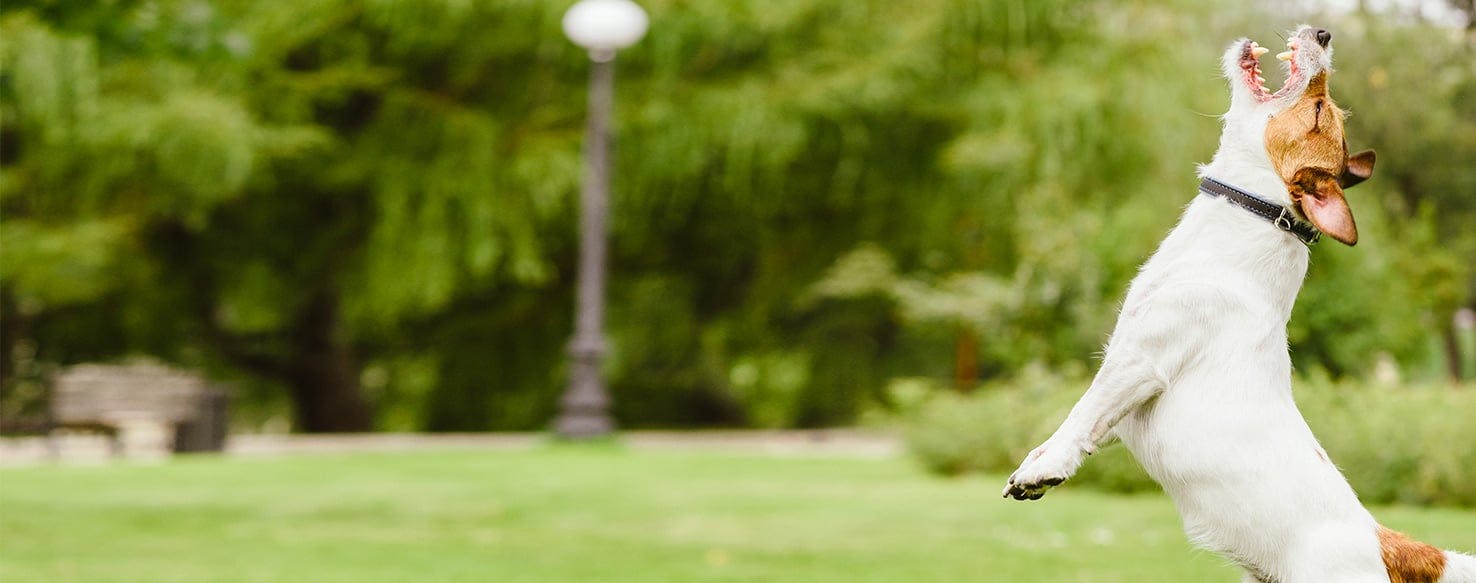- Home
- The Daily Wag!
- Behavior
- Why Do Dogs Hop
Why Do Dogs Hop

Common
Irregular
Introduction
A lot of animals owners have seen their pet hopping around from time to time, and canines are no different. In fact, there can be a whole bunch of reasons behind this adorable behavior. A lot of dog owners refer to this specifically as "bunny hopping," which is a great description. You can often see your canine bunching up just like a rabbit before springing around a large yard or open area. This usually has to do with how much sheer energy is in your dog. So what provokes this behavior? Is it something that should be encouraged, or cause for some real concern?
The Root of the Behavior
The first real concept behind this particular doggie inclination is that it's a remnant of hunting behaviors. This is especially true if you see them doing this in the tall grass. Hopping or pouncing can be a great way for a dog to flush out different types of game, like small rodents. This strategy tends to be seen most frequently in larger dogs, especially those that may contain the bloodlines of hunting animals. This is something that can be incredibly fun to watch and is very easily provoked by throwing one of your dog's toys into a high, grassy area. If you have a dog who gets what a lot of people refer to as the "zoomies," this hopping behavior can be directly related. Dogs tend to be big balls of energy, something that stems from their wild origins and tends to be exacerbated by their often homebound lifestyles. If you notice this hopping tends to occur only when you've just come home from work or when it's feeding time, this is probably a pretty big indicator that your dog is just really excited about what's currently going on.
You will often see this behavior start with some really quick running. Look for your dog's tail to be tucked underneath him. If all of these signs preface a bout of hopping, rest assured that your dog is just stoked! Hopping can also be due to neurological issues, albeit safe and expected ones. When dogs are young, there are billions of connections being made in their brains as they grow and understand the world. The are complex connections based on instincts, biology, and all the feedback that puppies gather from the outside world. Occasionally, these "wires" can get temporarily crossed, resulting in some interesting physical behaviors. So if you see your dog hopping and it's pretty much inexplicable, keep this thought in mind. It could almost certainly save you an unnecessary trip to the vet's office, as almost all dogs will grow out of these awkward motions as they mature.
Need advice about your pet's health?
Get answers fast from a veterinary professional 24/7 in the Wag! App.
Get Vet ChatEncouraging the Behavior
One thing that veterinarians always suggest to watch out for is accompanying pain with hopping behaviors. If your dog looks troubled while this is occurring, he may be encountering an orthopedic problem. This issue is commonly referred to as hip dysplasia. It most frequently occurs in large dog breeds, especially those that are especially active. In these cases, the dog will have a faulty hip joint, most likely inherited from its ancestors. Over time this faulty hip will cause abnormal wear and tear on the bones, usually causing arthritis. Along with this, most dogs will experience inflammation and joint pain. While there are several options for treatment, there is no cure for these genetic issues as they are usually inherent to the dog's DNA.
Another health issue that could be causing your dog to hop is something called luxating patella. What this basically means is that your dog's kneecap will "float around" or move inappropriately when they're at play. If this ailment becomes bad enough, they may experience it while just walking around normally. Luxating patella is also commonly referred to as a "trick knee" and is something that can oftentimes be remedied with surgery and physical therapy. Consult with your regular vet for the best advice.
Other Solutions and Considerations
So what are the signs that your dog is suffering from a medical issue and not just an excess of energy? Limping is a very obvious sign here. If you take your dog out for a bit of play time and you notice that they return the ball on three legs instead of four, take note. This is a behavior that can sometimes be a one time issue, instead of an indicator for pain. In fact there are several observed instances of dogs faking this behavior for attention. That's why it's wise to observe for at least a few days before consulting a professional.
Conclusion
Dogs are natural born hoppers, that is just an unavoidable fact of life. Occasionally, they are going to suffer illnesses just like humans. But with enough foresight regarding your dog's health, you can guarantee their contentedness for years to come. It is always great to know that you're good at making your dog "hoppy!"
Written by a Pug lover Shane Langenfeld
Veterinary reviewed by:
Published: 03/23/2018, edited: 01/30/2020
More articles by Shane Langenfeld
